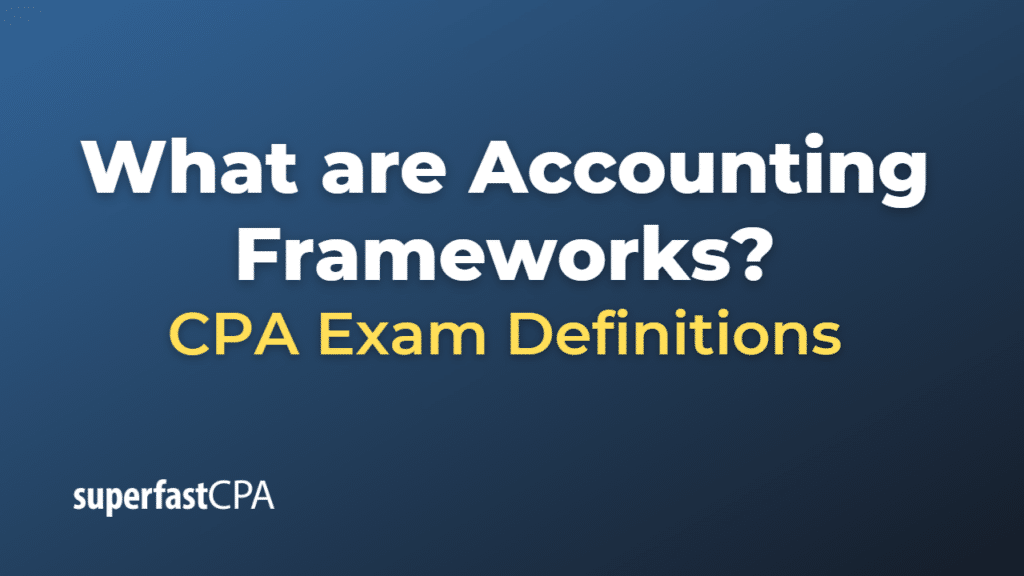Accounting Frameworks
In the United States, there are two primary accounting frameworks commonly used by businesses and organizations for financial reporting purposes:
- Generally Accepted Accounting Principles (GAAP): GAAP is the standard accounting framework used by most U.S. companies. It is a set of rules, guidelines, and principles established by the Financial Accounting Standards Board (FASB) to ensure consistency, comparability, and reliability in financial reporting. GAAP covers various aspects of accounting, such as revenue recognition, expense recognition, financial statement presentation, and disclosure requirements.
- International Financial Reporting Standards (IFRS): IFRS is a global accounting framework developed by the International Accounting Standards Board (IASB). Although IFRS is more commonly used by companies outside the U.S., some U.S. companies with international operations or subsidiaries may also use IFRS for their financial reporting. IFRS aims to provide a single set of high-quality, globally accepted accounting standards to improve transparency and comparability of financial information across different countries.
In addition to these two primary frameworks, there are other specialized accounting frameworks used by certain types of entities or industries in the United States:
- Governmental Accounting Standards (GAS): GAS are used by state and local governments to ensure consistency and transparency in financial reporting. The Governmental Accounting Standards Board (GASB) is responsible for establishing and improving these standards.
- Not-for-Profit Accounting Standards: Nonprofit organizations in the United States follow specific accounting standards to meet the unique financial reporting needs of the sector. The FASB provides guidance for not-for-profit entities through its Accounting Standards Codification (ASC) Topic 958.
- Industry-specific accounting frameworks: Some industries have unique accounting requirements due to the nature of their operations or regulatory environments. Examples include the insurance industry, which follows the Statutory Accounting Principles (SAP) established by the National Association of Insurance Commissioners (NAIC), and the banking industry, which is subject to regulatory reporting requirements set by agencies such as the Federal Reserve and the Office of the Comptroller of the Currency (OCC).
It’s important to note that the selection of an accounting framework depends on the specific needs and regulatory requirements of a company or organization. In some cases, entities may need to prepare financial statements under multiple accounting frameworks to satisfy different stakeholders or regulatory bodies.
Example of Accounting Frameworks
Let’s consider a hypothetical U.S.-based multinational corporation called “GlobalTech Inc.” that has both domestic and international operations.
- Domestic Financial Reporting: GlobalTech Inc. is required to prepare its consolidated financial statements in accordance with U.S. Generally Accepted Accounting Principles (GAAP) since it is based in the United States. This ensures that the company’s financial information is consistent with other U.S. companies and adheres to the established accounting standards set by the Financial Accounting Standards Board (FASB).
- International Subsidiaries: GlobalTech Inc. has a subsidiary in Germany called “GlobalTech GmbH.” Since Germany requires companies to prepare their financial statements in accordance with International Financial Reporting Standards (IFRS), GlobalTech GmbH will need to follow IFRS for its local financial reporting purposes. This enables GlobalTech GmbH to be in compliance with local regulatory requirements and allows for comparability with other companies operating in Germany or the European Union.
- Industry-specific Requirements: Let’s assume that GlobalTech Inc. has a subsidiary in the United States called “GlobalTech Insurance,” which operates in the insurance industry. This subsidiary would need to follow Statutory Accounting Principles (SAP) established by the National Association of Insurance Commissioners (NAIC) for its regulatory reporting purposes. SAP is designed specifically for insurance companies and focuses on the solvency and financial condition of the insurer.
In this example, GlobalTech Inc. needs to prepare financial statements under multiple accounting frameworks to satisfy different stakeholders and regulatory bodies:
- U.S. GAAP for its consolidated financial statements
- IFRS for its German subsidiary, GlobalTech GmbH
- SAP for its U.S. insurance subsidiary, GlobalTech Insurance
This illustrates how multinational corporations and companies operating in different industries may need to navigate multiple accounting frameworks to meet various financial reporting requirements.













